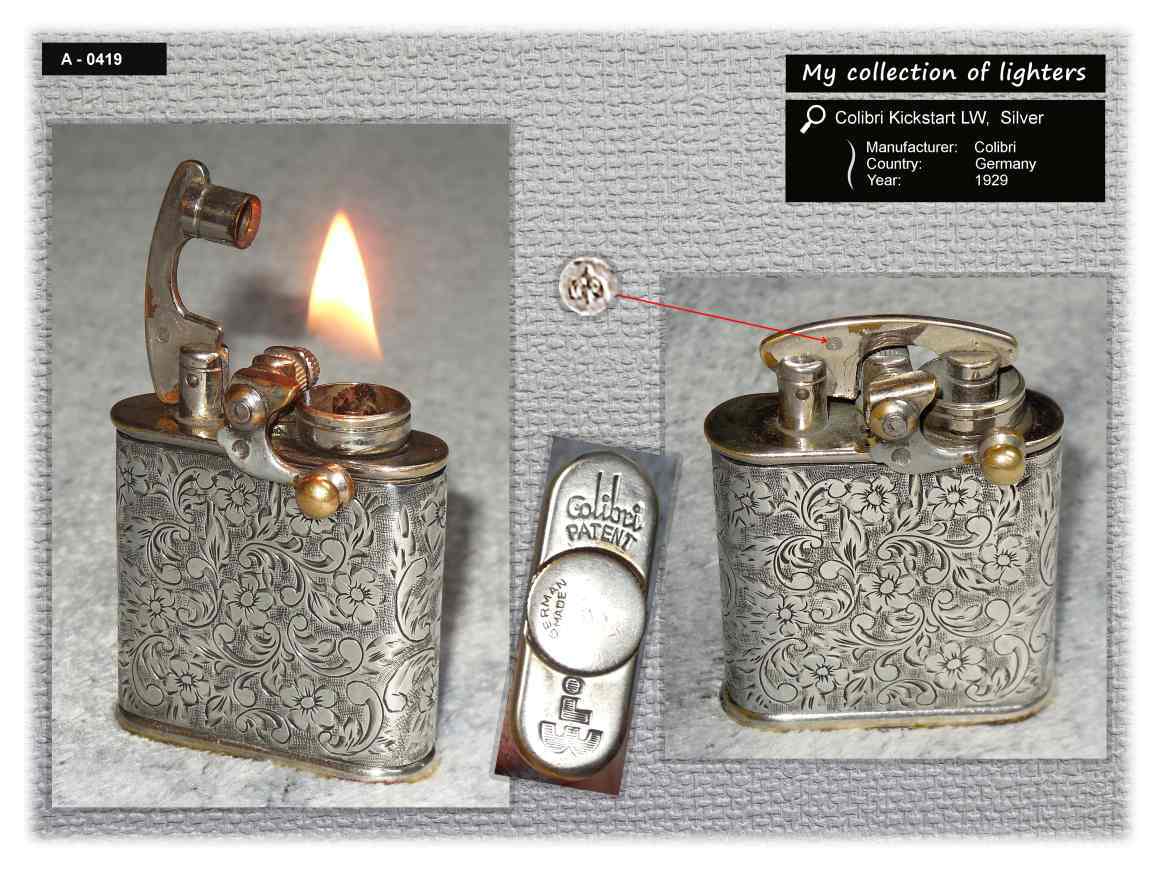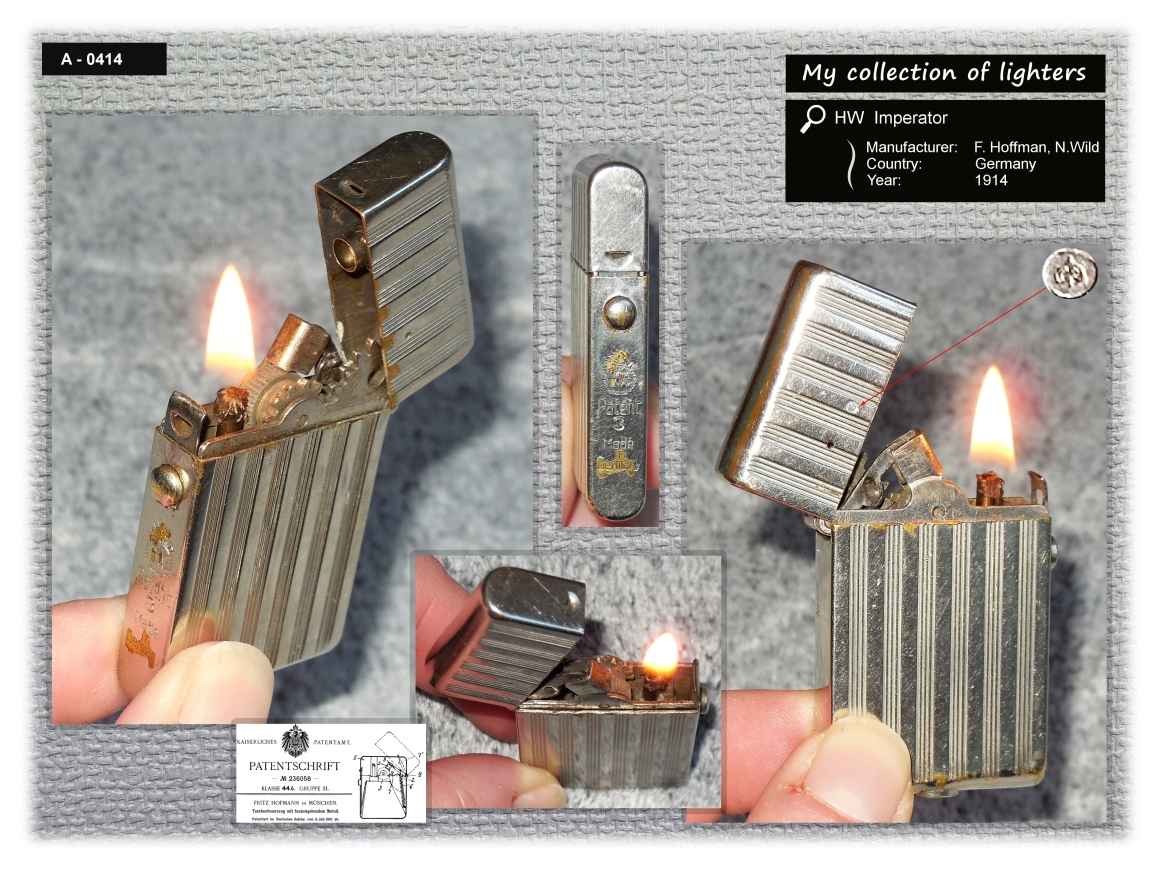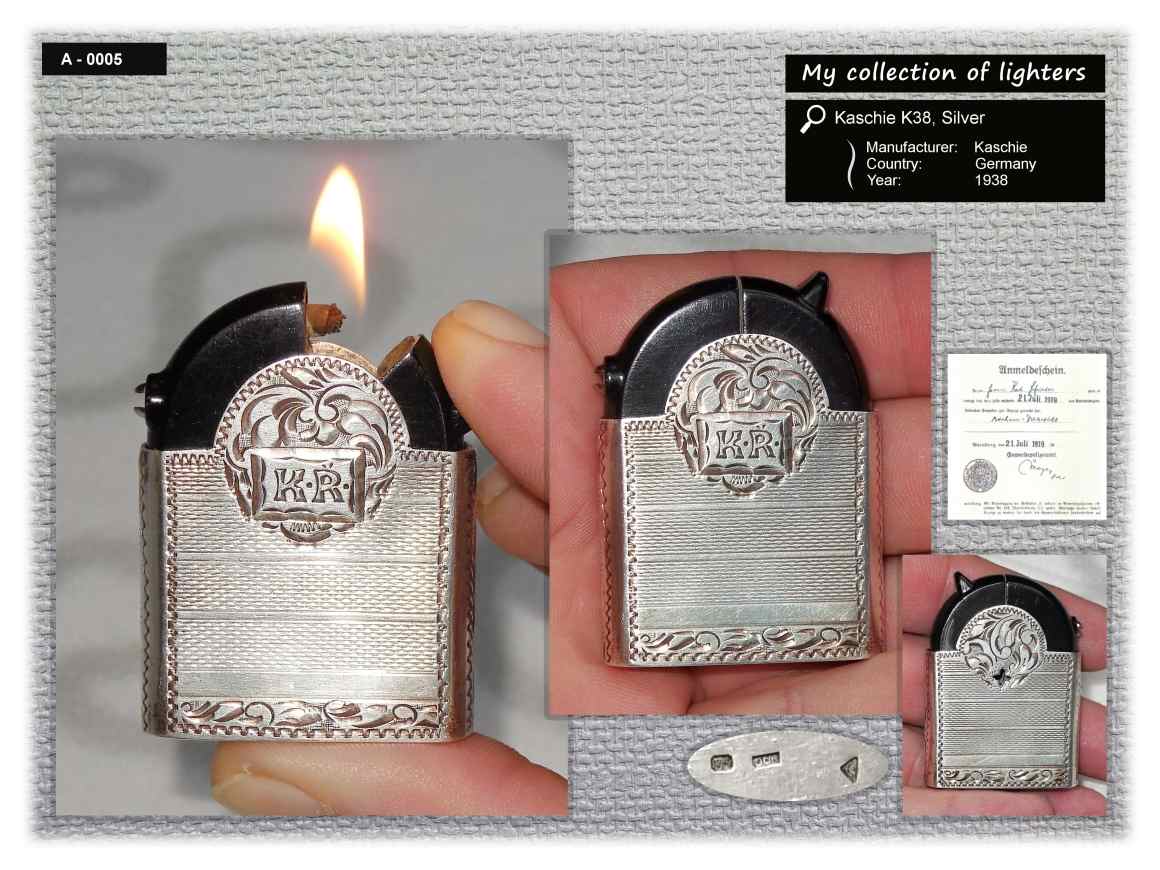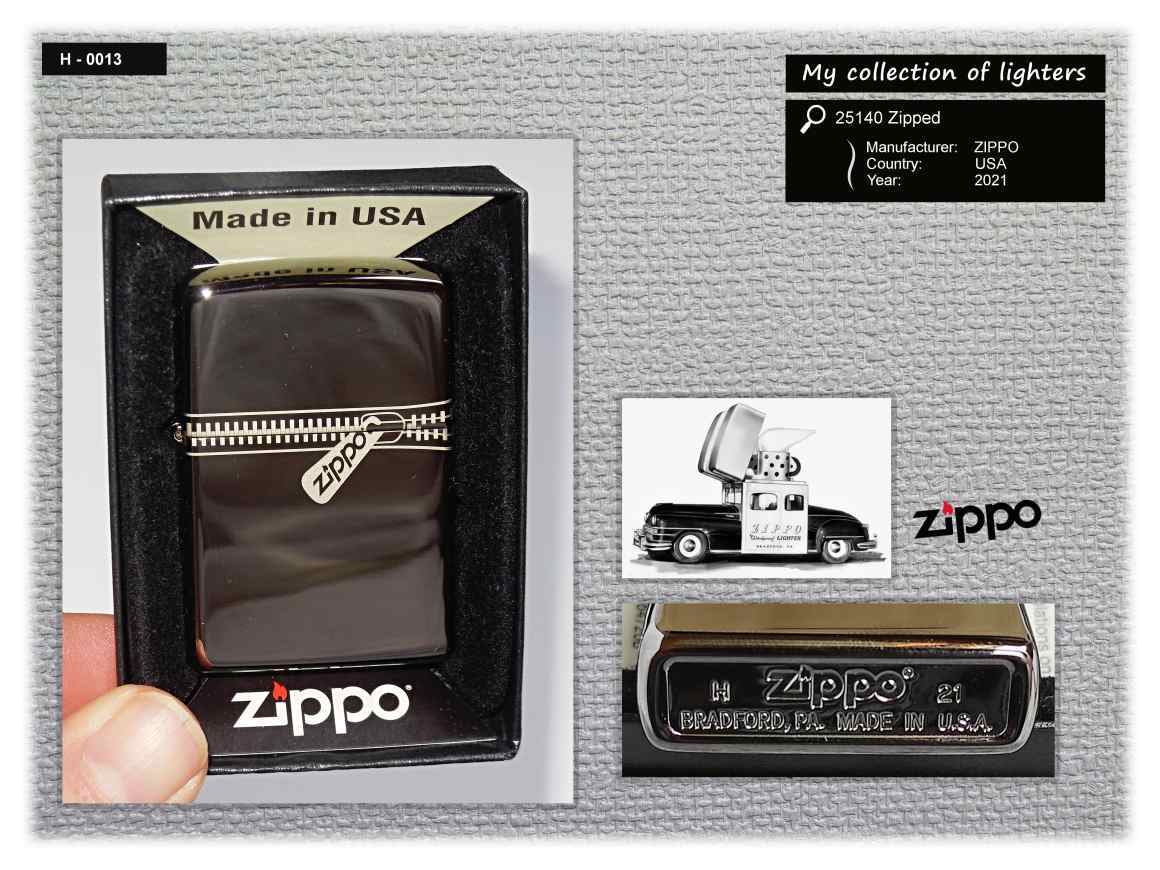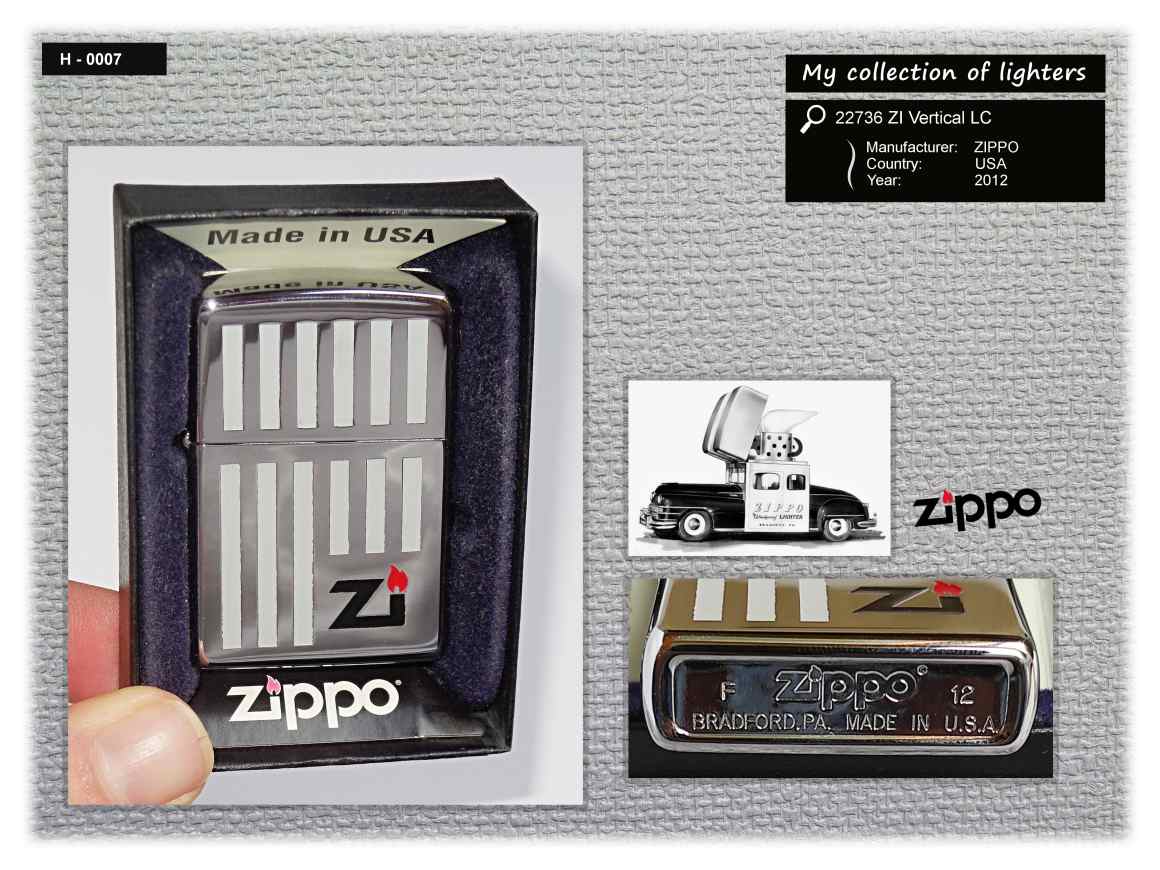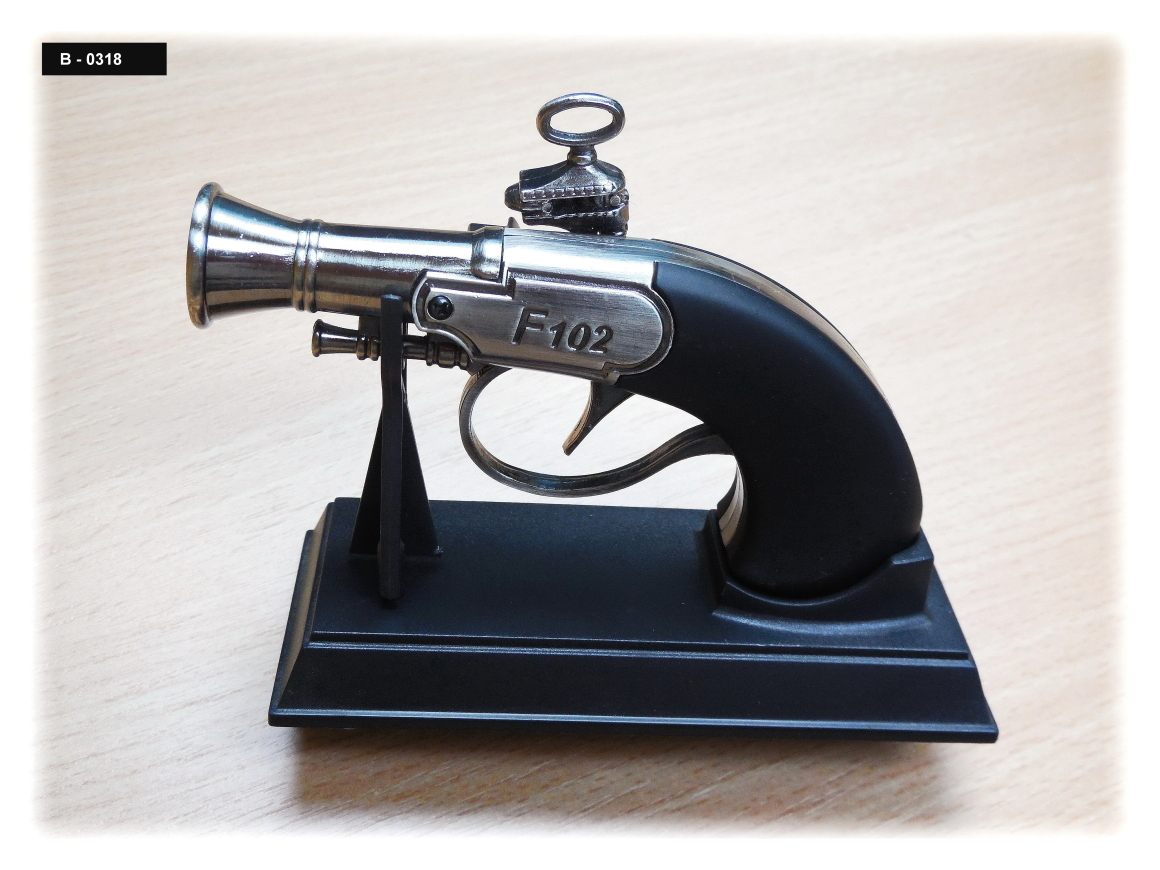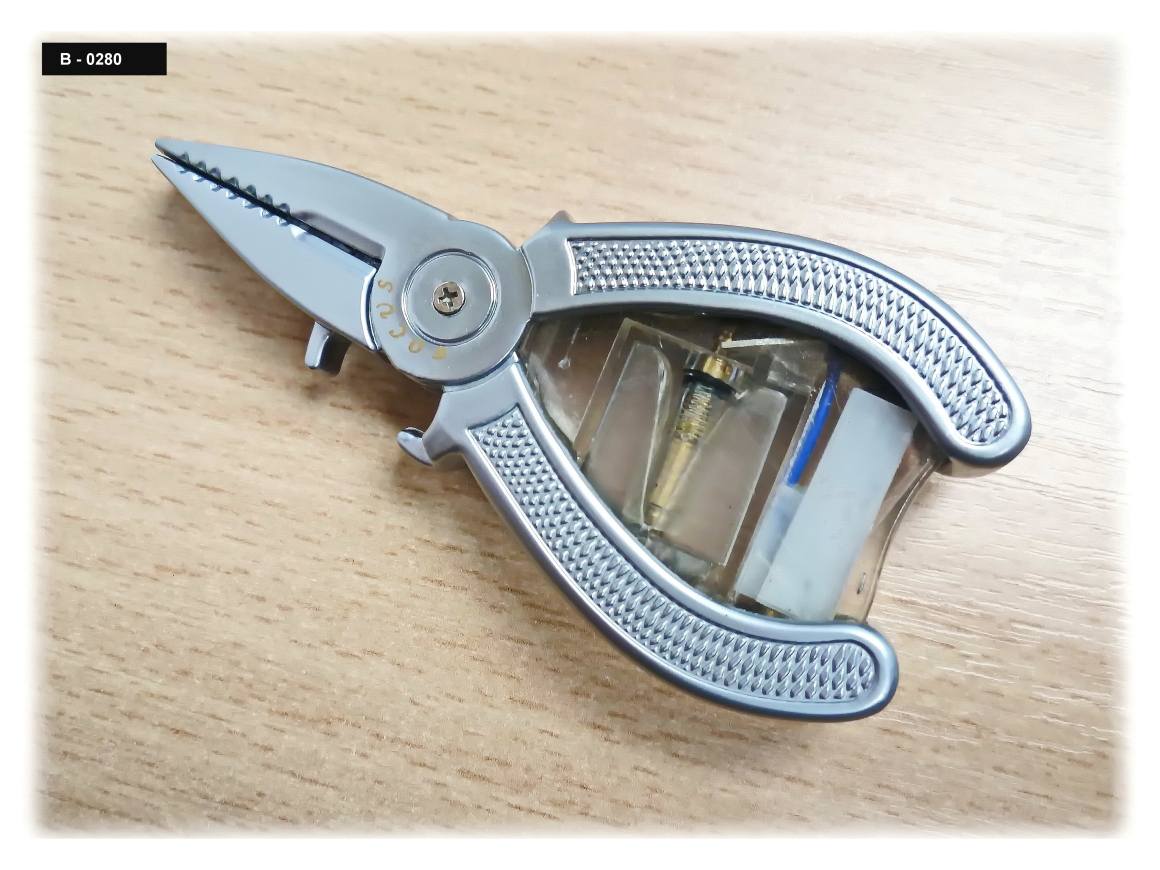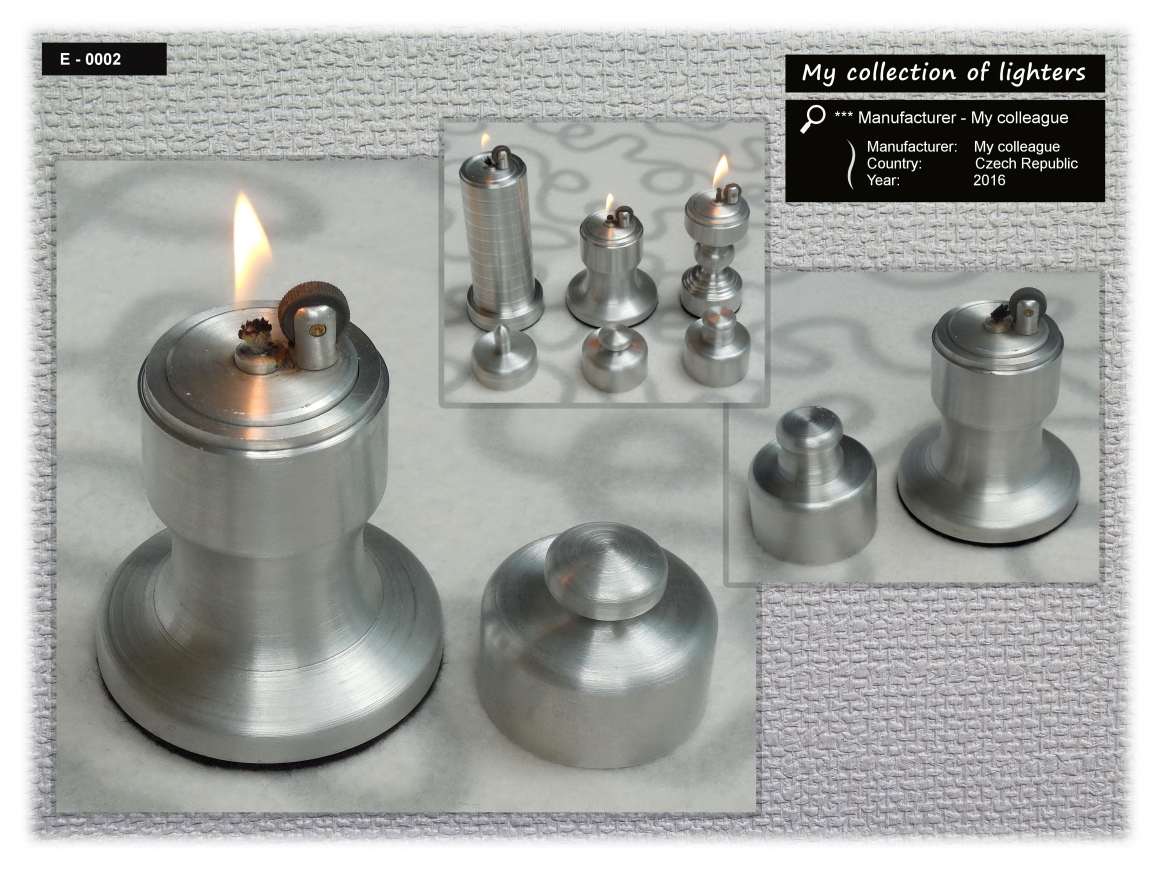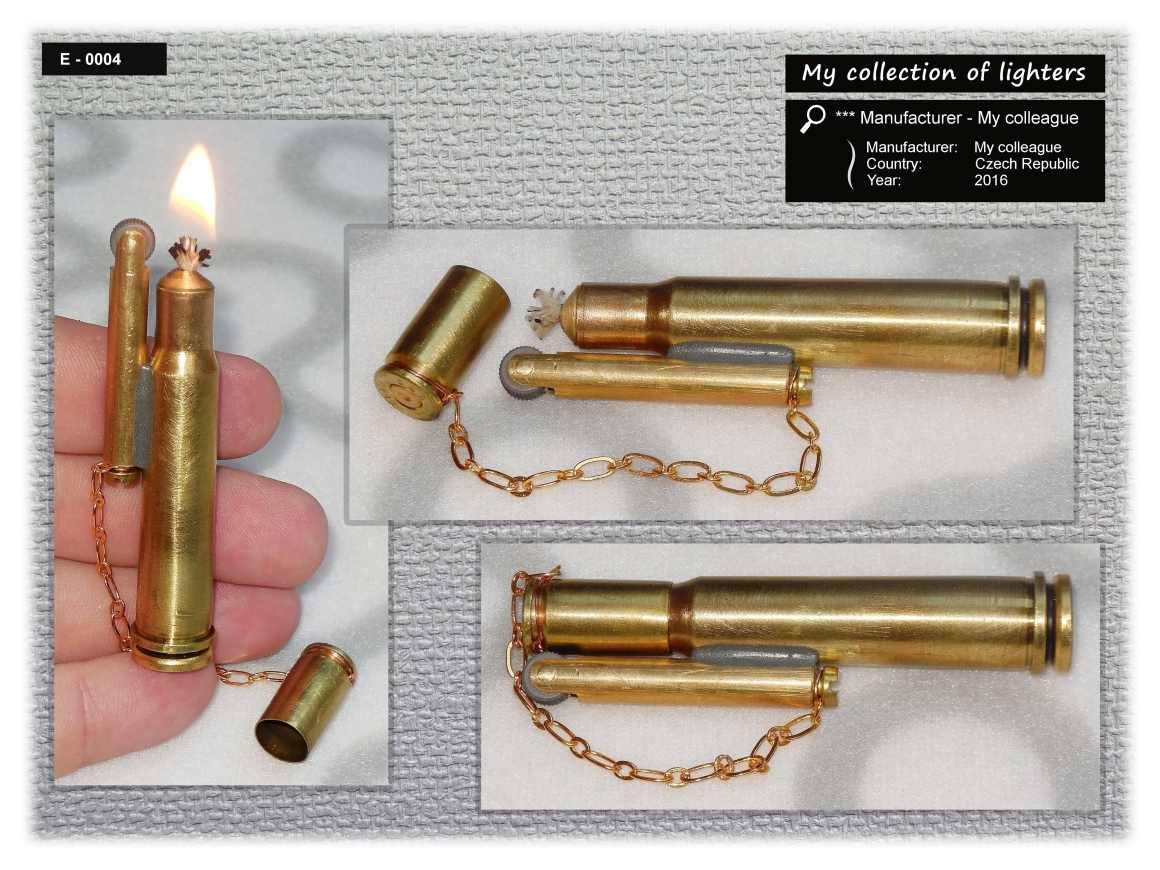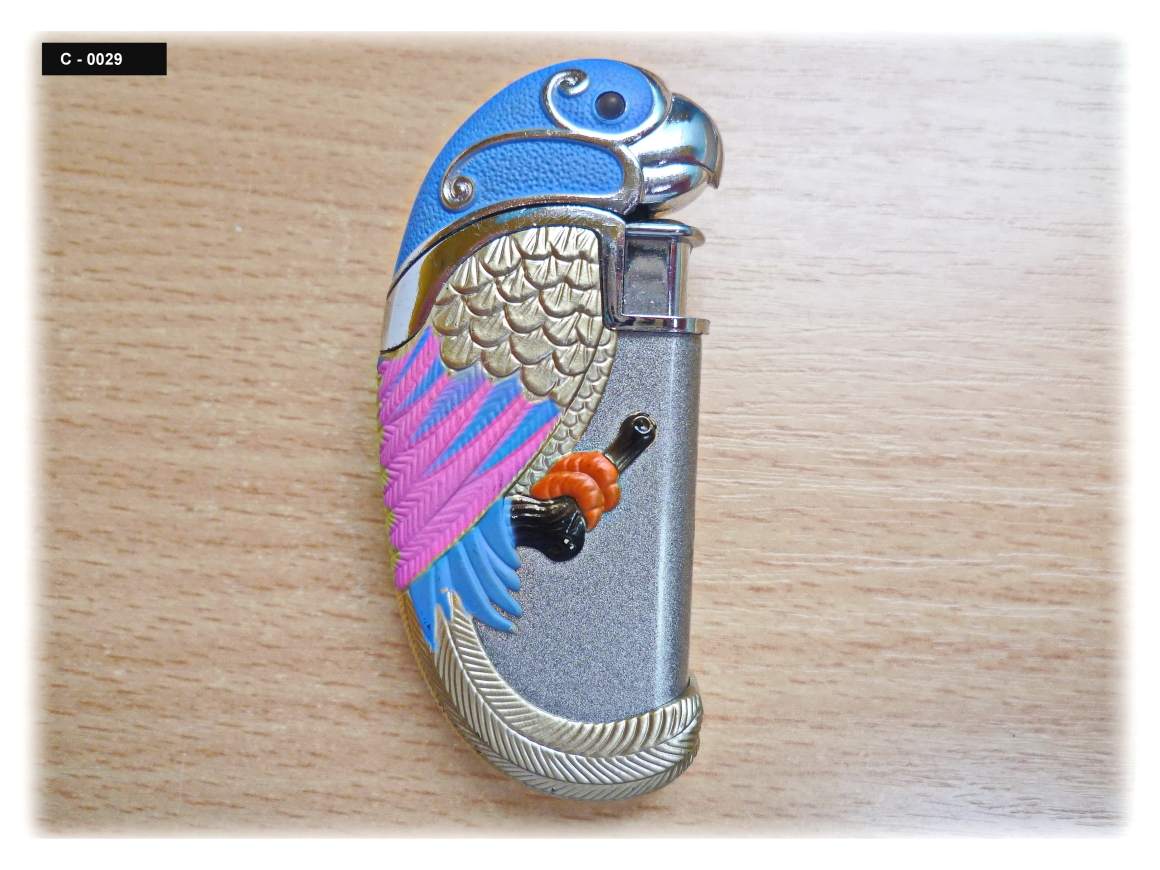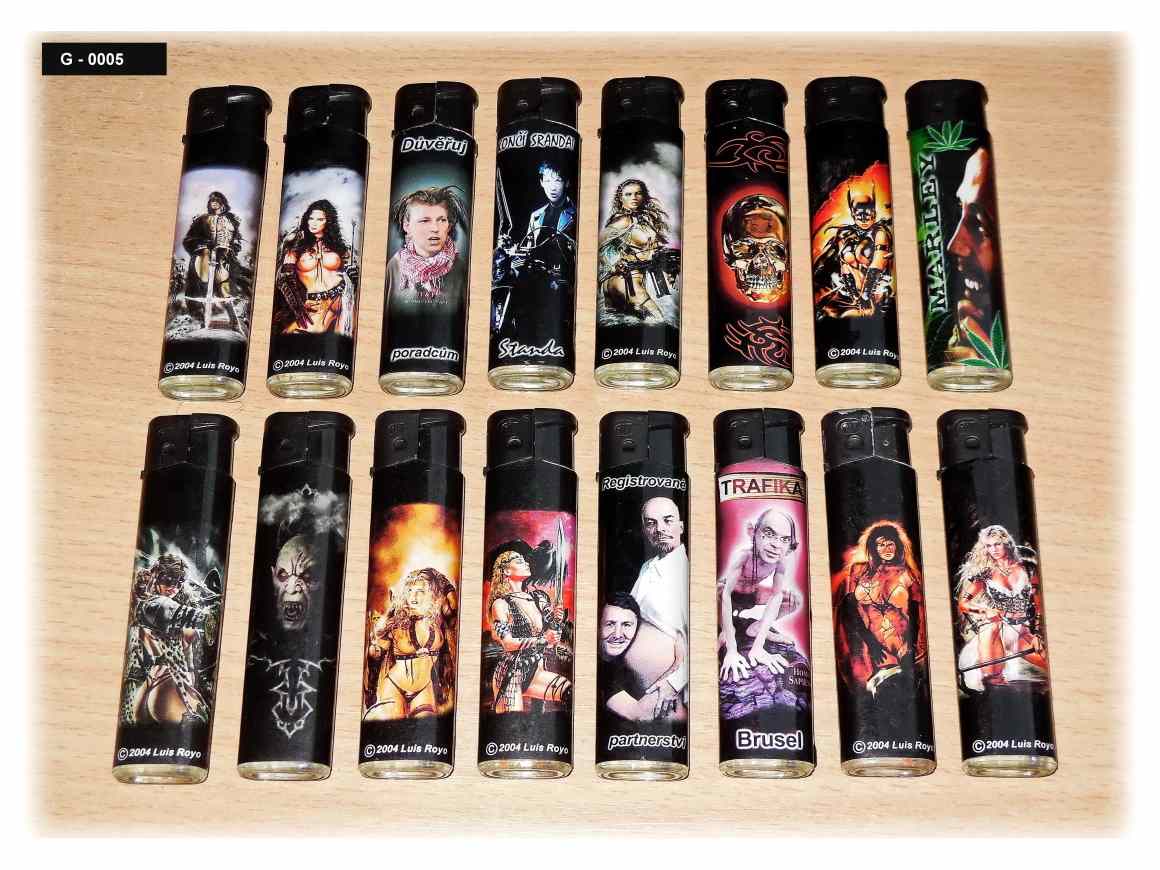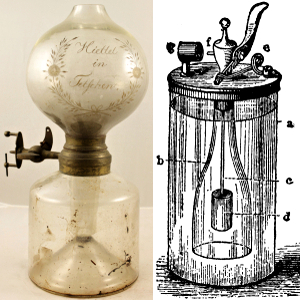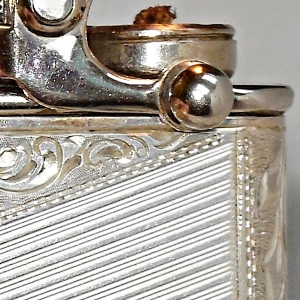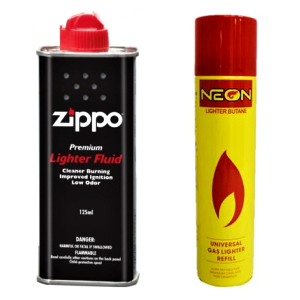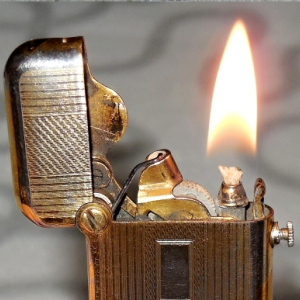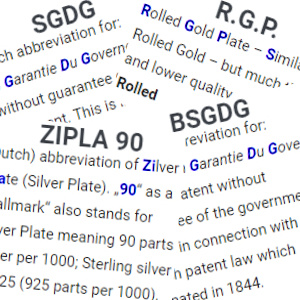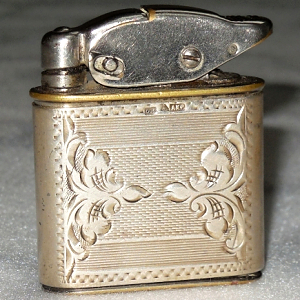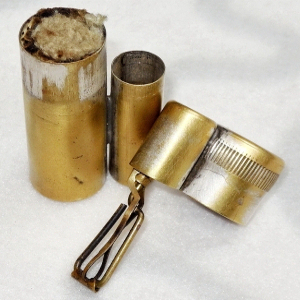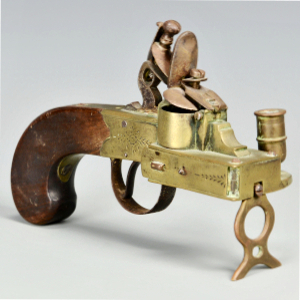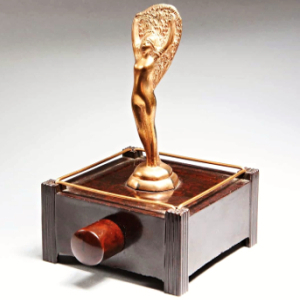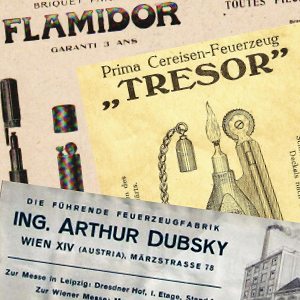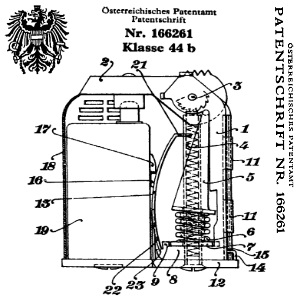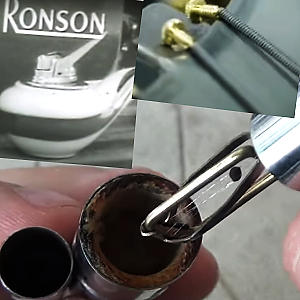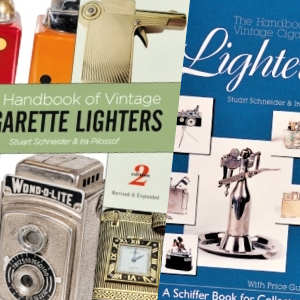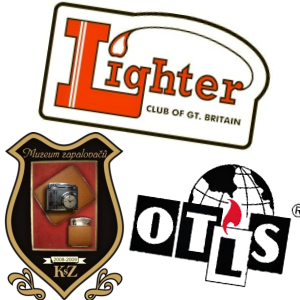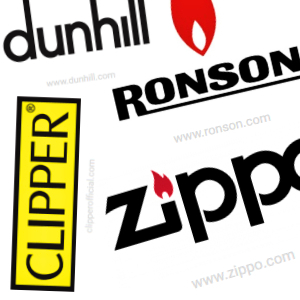- Timeline:
0 - PALEOLITHIC ERA
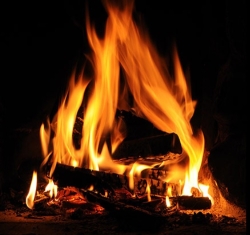
The Homo erectus discovered fire. This was a groundbreaking moment that contributed in big ways to the survival of our entire species, and eventually, to the creation of the lighter.
Fire was used by the Lower Paleolithic hominins Homo erectus and Homo ergaster as early as 300,000 to 1.5 million years ago and possibly even earlier by the early Lower Paleolithic (Oldowan) hominin Homo habilis or by robust Australopithecines such as Paranthropus.[3] However, the use of fire only became common in the societies of the following Middle Stone Age and Middle Paleolithic.[2] Use of fire reduced mortality rates and provided protection against predators.[35] Early hominins may have begun to cook their food as early as the Lower Paleolithic (c. 1.9 million years ago) or at the latest in the early Middle Paleolithic (c. 250,000 years ago).[36]
1805 - THE FIRST MATCH
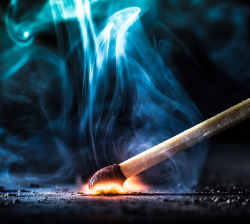
The first modern, self-igniting match was invented in 1805 by Jean Chancel, assistant to Professor Louis Jacques Thénard of Paris. The head of the match consisted of a mixture of potassium chlorate, sulfur, gum arabic and sugar. The match was ignited by dipping its tip in a small asbestos bottle filled with sulfuric acid.[3] This kind of match was quite expensive, however, and its use was also relatively dangerous, so Chancel’s matches never really became widely adopted or in commonplace use.
1823 - DÖBEREINER'S LAMP
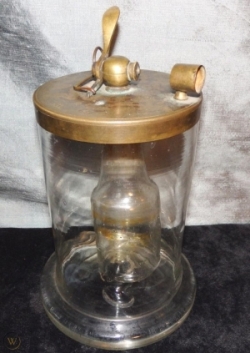
In 1823, Johann Wolfgang Döbereiner, a German chemist and professor at the University of Jena, invented one of the earliest lighters; however, it looked nothing like a modern-day lighter.
Also known as a ‘tinderbox’ (or “Feuerzeug”), the lamp was an exceptionally popular item, reportedly selling over a million units in the 1820s.
The bizarre looking contraption worked by reacting zinc with dilute sulphuric acid in order to produce hydrogen. To use, a valve was lifted, firing the hydrogen towards a porous form of platinum known as ‘platinum sponge’. This then reacted with the atmospheric oxygen, heating the platinum and igniting the hydrogen – the result was a steady flame.
1826 - JOHN WALKER INVENTED THE FRICTION MATCH
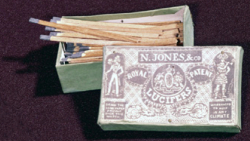
John Walker from England created a match that worked via friction. He never received a patent for this invention, so another matchmaker named Samuel Jones stole his idea and marketed it under the name “Lucifers” a few years later.
1892 - JOSHUA PUSEY PATENTED THE PAPER MATCHBOOK
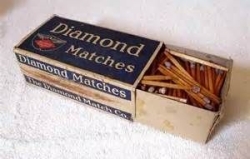
In 1892, inventor Joshua Pusey received a U.S. patent for the paper matchbook. Three years later he sold his patent to the Diamond Match Company, and soon millions of matchbooks were being produced each year. A Civil War veteran and longtime Philadelphia attorney, Pusey was awarded nearly 40 patents during his life. Descendant of an old Quaker family, he lived here at “Maple Linden” after 1889.
1900 - THE FIRST MODEL OF THE LUMINUS LIGHTER

The “Luminus” electrical lighter (fr. Allumoir électrique) was invented, patented and manufactured by BERNARD-ALEXANDRE CARRIER in 1900 in Paris (rue Fenelon 7), France. It based on the invention of a fluid cell battery by Grenet.
It was advertised in the French press as “essential device for you. Instant light by pressing a button” (fr. Appareil indispendable chez soi. Lumiere instantanee en pressant un bouton)”. It was the best known bichromate electric lighter and the “Luminus” name is now in use for other lighters that type as well.
The first model of the Luminus lighter won the gold medal at the 1900 Exposition Universelle in Paris and was replaced in 1904 by the second model which introduced a second cap and was produced until 1914 (vide patent drawings no. FR3883).
1902 - THE FIRST BRANDED MATCHES

The first branded matches were created for the Pabst Brewing Company in Milwaukee. Food and beverage companies don’t use matches as often today, but they’re still a favorite among collectors.
The Pabst Brewing Company (/ˈpæpst/) is an American company that dates its origins to a brewing company founded in 1844 by Jacob Best and was, by 1889, named after Frederick Pabst.
1903 - THE ADVENT OF FERROCERIUM

Ferrocerium is a synthetic alloy that produces very hot and bright sparks when struck. Often incorrectly referred to as ‘flint’, ferrocerium is a different substance completely; the naming similarity stems from flint’s previous usage as a producer of sparks.
Invented in 1903 by Austrian chemist Carl Auer von Welsbach, ferrocerium revolutionised the lighter, as it made creating necessary sparks for ignition easy, and was also a relatively affordable material.
1910 - THE RONSON PIST-O-LITER AND WONDERLITE
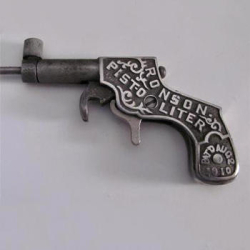
One of the most well-known classic lighter designs was the Pist-O-Liter, manufactured by Ronson in 1910.
Designed to closely resemble a long-barreled pistol, the trigger released a file-like component which rubbed against a flint-like surface contained in the barrel. This produced sufficient sparks to ignite flammable substances. The long barrel made the Pist-O-Liter a practical choice for applying sparks to harder-to-reach places, such as motor vehicle engines.
Shortly after this in 1912, Ronson developed the Wonderlite, a metal cased lighter more closely resembling modern varieties, known as a ‘permanent match’ style of lighter.
1914 - WORLD WAR I: IMPROVISED LIGHTERS
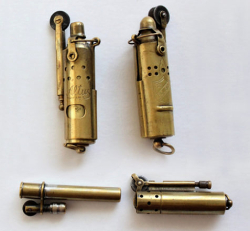
Life in the trenches during the First World War was notably difficult, particularly on the front lines, where resources, tools and general supplies were extremely limited.
Soldiers therefore started to improvise and created everyday tools by hand using whatever discarded items they could find. One of these was a handmade lighter fashioned from an empty bullet cartridge; it even included a holed chimney cap to better protect the flame from wind.
1920 - THE FIRST LIGHTER IMCO

Imco lighters were first made in 1920 from empty cartigage cases by Julius Meister & Company Vienna Austria. They recieved their first patent in 1922 – 89538. Since then they have made around 70 different models of lighters. They are well made and very reliable.
Due to the restraints of the First World War, IMCO couldn’t actually start making lighters in the 1910s. When the war ended in 1918, the need for flashy brass buttons for the army suddenly ended, and IMCO was groping around to try and find something else to manufacture. In 1920, the first IMCO lighter was released.
1926 - THE FIRST AUTOM. LIGHTER THE RONSON BANJO

Ronson went on to refine their design with the Banjo lighter in 1926. Developed in New Jersey, USA, the Ronson Banjo was a huge success thanks to its simple usability and attractive design.
The world’s first automatic pocket lighter, the Ronson Banjo required only the press of a button to generate the flame.
It cost $5.00 at the time, but mint condition versions are worth many hundreds today as collectables.
1928 - A LIGHTER MANUFACTURER NAMED COLIBRI

Colibri was founded in 1928 by Julius Lowenthal, who in the same year, invented the world’s first working semi-automatic lighter.[1] In 1935, Colibri launched the fully automatic ‘Monopol’ lighter, which had an acceleration system. From 1940 to 1945 Colibri produced the ‘Stormgard’ lighter designed for soldiers fighting in World War II. In 1952, Julius Lowenthal’s son Jack joined Colibri. Colibri produced a lighter with a visible multiple gas refill and a hydraulic auto-flint system in 1958, and an electric lighter, which they named Molectric in 1967.
A lighter manufacturer named Colibri is credited for the invention of the semi-automatic lighter. These are still on the market today and are primarily used for lighting cigars.
1932 - Karl Wieden KW 650/G, Table Lighter
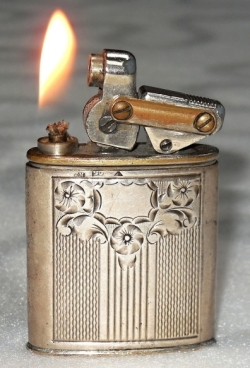
The KW type 650/G was first manufactured by Karl Wieden (KW) in 1932 in Germany. It was a very successful and robust semi-automatic table lighter produced in various finishes till the early 1950s.
Usually marked KW on the bottom. Other markings are possible (but rare).
The removable lighter insert is a standard brass KW in normal size. There were also available smaller units in the size 3/4 and 1/2 of the normal KW (see dimensions). The lighter model was patented in Germany in 1936 although the design was introduced into the market in 1952.
1933 - THE FIRST ZIPPO LIGHTER
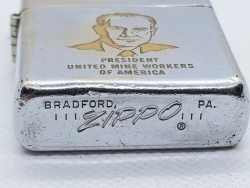
Inventor George G. Blaisdell introduced what would become the world’s most famous lighter in 1933. The design of the original Zippo proved so popular that it is still popular today, with only small changes.
Early Zippos were made of brass; however, during the Second World War they were manufactured from black crackle steel due to metal shortages. Zippos during wartime were commonly emblazoned with unit crests and other military symbols, a trend which is still popular today.
1948 - TABLE LIGHTER, MYLFLAM - 1000 ZÜNDER, MODEL 111
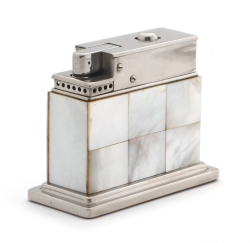
This table lighter Modell 111 was manufactured between 1948 and 1953 in Frankfurt am Mein in Germany by Mylflam Metallwaren GmbH. This semi-automatic petrol lighter was marketed in many different finishes like: silver, nickel plate, brass, lacquer, various types of leather etc. Below an example of the Mylflam Model 111 in nickel plate and mother of pearl finish.
The patented mechanism gave the owner the possibility to hand it over without extinguishing the flame. The table lighter was advertised as a “Present-article much in demand for offices, conference and dwelling-rooms”.
1950 - BUTANE LIGHTERS HAD A SURGE IN POPULARITY

In the 1950s, the main fuel source for lighters became butane. This enabled creation of really light and disposable lighters that quickly spread all around the world.
1962 - PIEZOELECTRIC LIGHTER
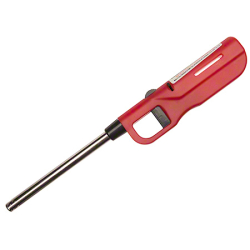
The piezoelectric lighter was introduced in the 1960s and was developed as an alternative to fuel burning lighters. Instead of a naked flame, the mechanism here used a small, spring-loaded hammer to hit a quartz crystal. This created voltage when deformed, resulting in an electrical discharge, which served as the ignition.
While still in use today, the piezoelectric lighter’s popularity was relatively short lived, fading out of mainstream use during the 1970s. While not used by smokers, variants of this technology remain in use for more practical purposes such as barbecue lighting.
1973 - THE FIRST BIC DISPOSABLE LIGHTER

The Bic company came out with the Bic lighter in 1973 in an effort to compete with a new disposable lighter introduced by Gillette in 1972. Bic’s lighter was cheaper and superior to Gillette’s Cricket. In 1984, Gillette sold its lighter design to a European company.
Bic was founded by Marcel Bich in 1945. He and his partner, Edouard Buffard began manufacturing pens and pencils in France. In 1958, the company moved into the United States with the purchase of the Waterman Pen Company, based in Connecticut. Since then, Bic has introduced additional products such as disposable razors, drawing pencils, Wite-Out, a Bic phone and fuel cells.
SOURCE:
- https://en.wikipedia.org/wiki/Pabst_Brewing_Company
- https://en.wikipedia.org/wiki/Carl_Auer_von_Welsbach
- https://en.wikipedia.org/wiki/Colibri_Group
- https://en.wikipedia.org/wiki/Paleolithic#Fire_use
- https://www.worthpoint.com/worthopedia/antique-1820s-hand-blown-glass-1819914675
- https://www.qualitylogoproducts.com/blog/history-of-lighters
- https://sharrowmills.com/pages/the-story-of-the-everyday-lighter
- https://cz.pinterest.com/pin/546413367268810190/?lp=true
- https://www.taverntrove.com/pabst-brewing-company-of-milwaukee-wisconsin-usa-br-184.html
- https://www.worthpoint.com/worthopedia/vintage-1910-cast-iron-ronson-pisto-434682521
- https://coolmaterial.com/feature/trench-lighter-history
- https://www.reference.com/history/invented-bic-lighter-92995fc223a458f
- https://www.throughouthistory.com/?p=4288
- http://www.vintage-evans-and-classic-cigarette-lighters.com/imco.php
- http://table-lighters.blogspot.com/search/label/1940s
- http://table-lighters.blogspot.com/2016/09/karl-wieden-kw-650g-table-lighter-1932.html
- http://table-lighters.blogspot.com/2019/09/m-carrier-luminus-electrical-lighter.html

